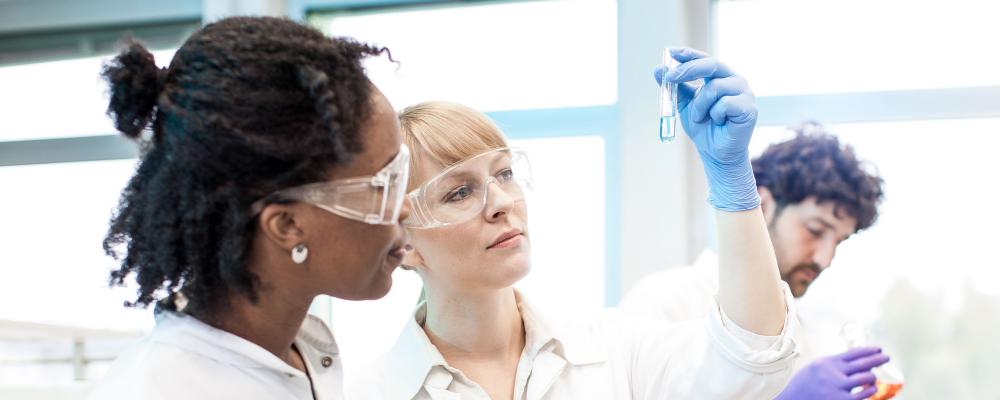Portal Our Laboratories


On the lookout for new strategies to test protein toxicity
The ANSES Fougères Laboratory coordinated the Protox project, which aimed to propose a strategy for determining protein toxicity using new approach methodologies (NAMs). Whether through food or our environment, we can be exposed to novel proteins whose health risks need to be assessed while minimising animal testing. Kevin Hogeveen, a toxicologist at the Fougères Laboratory and project coordinator, explains.
What was the Protox project?
Kevin Hogeveen: The Protox project, which ran from December 2022 to May 2024, was led by the ANSES Fougères Laboratory and the Luxembourg Institute of Science and Technology. We were responding to a request from the European Food Safety Authority (EFSA) to determine whether it was possible to assess protein toxicity using tests that did not involve animals, as is currently the case. Indeed, for mainly ethical reasons, the aim was to develop NAMs that reduce animal testing. However, thus far, very few such methods have been developed and approved under the regulations for assessing protein toxicity.
What proteins did you study?
KH: As part of this project, EFSA was mainly interested in the safety of proteins – whether novel or not – found in food and animal feed, including GMOs and novel foods. The project also covered proteins used in food processes, such as enzymes introduced during food processing and GMO-derived proteins used in some countries as biopesticides or to make plants resistant to pests. But this strategy can also be applied to all types of toxic proteins that can contaminate food or the environment, including toxins produced by fungi, plants or algae. With climate change, the areas in which some species are now found are expanding. As a result, we risk being exposed to proteins whose toxicity has not always been clearly determined. Workers can also be exposed to biopesticides or toxins as part of their job. Our objective was therefore to propose a testing strategy based on NAMs, taking account of the wide range of known mechanisms of action for toxic proteins.
What did your work consist of?
KH: We carried out a review of the literature and the available databases on proteins and identified 7000 potentially toxic proteins. We grouped them by the type of toxicity mechanism and by the relationship between living organisms that produce these proteins. Genetically similar groups often have similar toxicity mechanisms. These mechanisms of toxicity are diverse and include the generation of cell death, the induction of oxidative stress [damage to cell molecules by oxidation] and the blocking of ion channels essential to the proper functioning of cells. We identified the most appropriate tests for highlighting these different mechanisms. The tests — that can be incorporated into the proposed general strategy — depend on several parameters, such as their level of validation or acceptability with regard to the regulations, the number of proteins that can be tested, the time required, and their cost, complexity and accessibility to all laboratories.
What approach did you propose?
KH: We proposed a stepwise strategy. The first step is an in silico assessment of the protein, i.e. an assessment obtained by computer analyses. This will involve comparing the structure of the novel protein with those of proteins known to be toxic. We will therefore be able to estimate the probability of it being toxic and, as required, determine what mechanism should be tested first. Furthermore, if the protein comes from a species already known to produce toxic compounds, this will also prompt an assessment of the novel protein.
The second step is based on in vitro tests. The number of tests and their specificity will depend on the information already available: if a probable toxicity mechanism has been identified, the battery of in vitro tests will focus on this. If no information is available, all possible mechanisms of action should be tested, unless otherwise justified. After that, tests more specific to the route of exposure will be carried out. For example, if the source of exposure is the oral route, the effect of the protein will be assessed in the intestines. These secondary tests will determine whether the protein can induce intestinal toxicity, cause inflammation or cross the intestinal barrier.
If crossing of the intestinal barrier is observed for a protein whose distribution in the internal organs is known to be possible, then its effects on other organs, such as the cardiac or nervous system, will be assessed using appropriate tests. Similar reasoning will be applied if the source of entry into the body is through inhalation or skin contact.
What follow-up is planned for your work?
KH: The project’s final report was approved by EFSA and published on 5 November 2024. It is still too early to say whether the proposed strategy can be adopted in the European regulations for assessing protein toxicity. Nevertheless, it will be integrated into the current strategy, which uses animal testing, to compare the effectiveness of the two approaches.